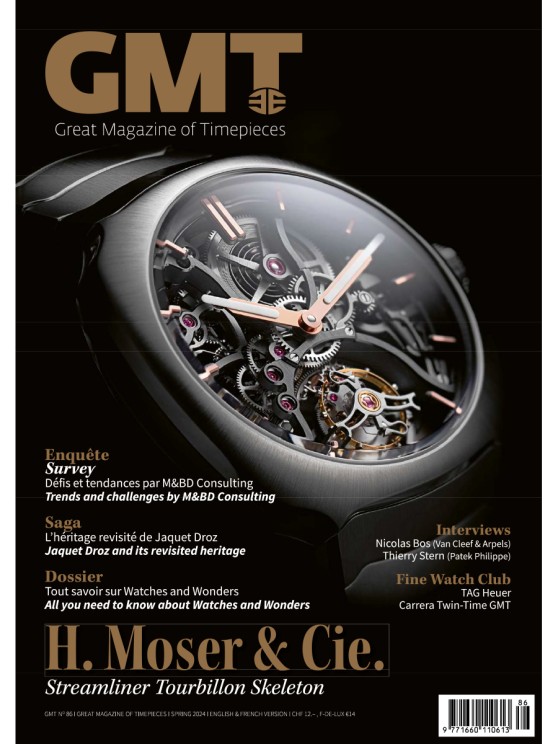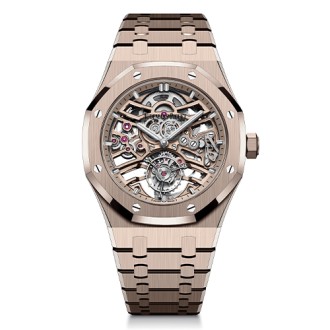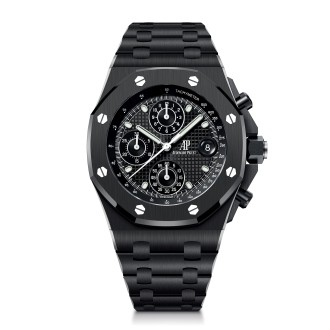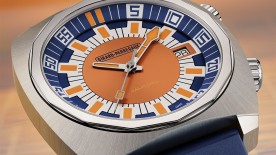For two centuries, research in the watch industry has pursued the ongoing objective of finding ever more beautiful, ever more durable materials. In 1972, steel was the real technological breakthrough, when the appearance of the Royal Oak Ref. 5402 shattered existing conventions. Steel acquired new nobility and heralded the sporty-chic watch segment.
Audemars Piguet subsequently opened the door to alloys. Pink gold made its debut in the mid-1980s, combining yellow gold with copper and silver. The formula proved popular and Audemars Piguet then went a step further by trying its hand at white gold, which contains palladium.
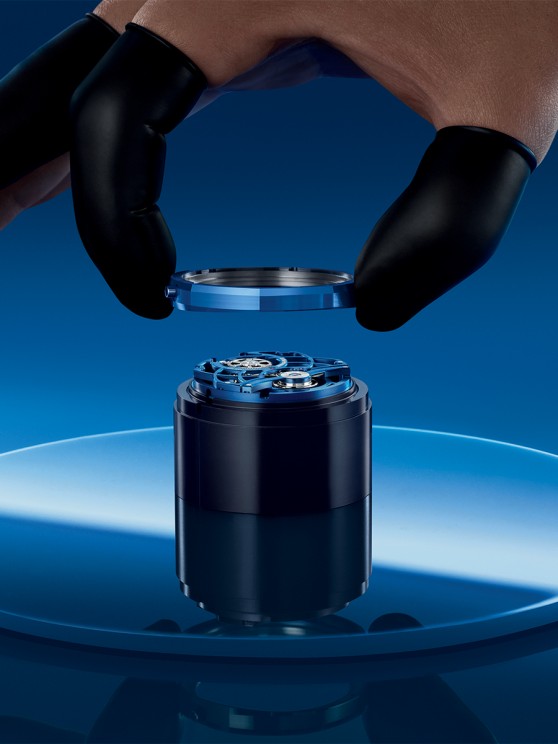
In 2003, the brand inaugurated its “Concept” capsule collection and alloys entered a new dimension. The first Royal Oak Concept featured a case in Alacrite 602, composed of cobalt, chromium, tungsten, carbon, silicon and iron.
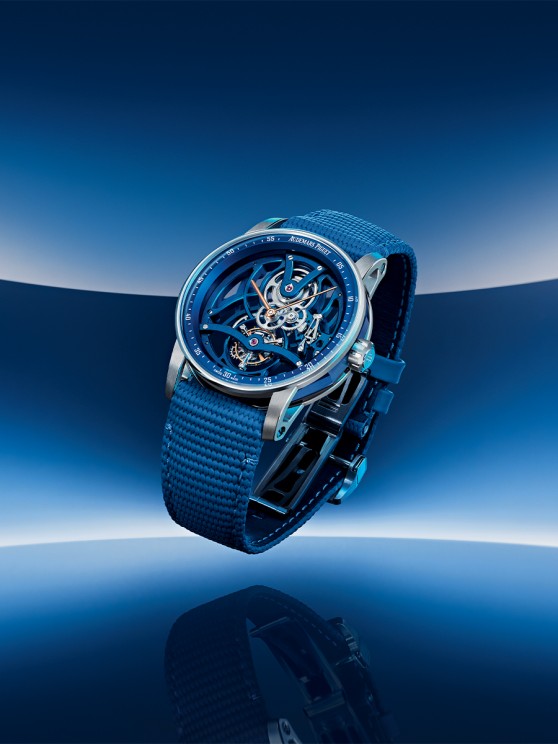
MAJOR DEVELOPMENTS IN CERAMICS
Greater resistance to shocks and scratches was the guiding principle of the 2000s and ceramics ruled supreme, exemplified by the 2006 launch of the Royal Oak Offshore Rubens Barrichello Chronograph II, adorned with a ceramic bezel. Five years later in 2012, Audemars Piguet added colorful iterations, the first being the black ceramic Royal Oak Offshore Arnold Schwarzenegger The Legacy Chronograph.
The material entered the regular Royal Oak collection in 2017, followed by blue in 2020 and white in 2023. Since then, a number of 100% ceramic (including the bracelet) Royal Oak models have been issued. Each time, the challenge has been to apply the brand’s signature finishes: the alternating polished and satin-brushed surfaces being so difficult to achieve on ultra-resistant ceramic made from zirconium oxide fired at 1400 °C.
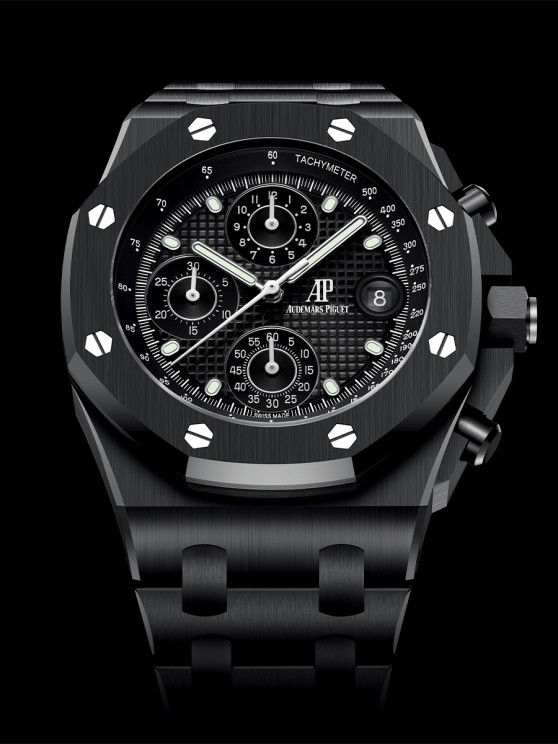
In 2021, Manufacture overcame the same difficulty with its first components made from BMG (Bulk Metallic Glass), an alloy that is first melted and then rapidly cooled. Audemars Piguet chose to co-develop its own palladium-based glass, giving it high resistance to wear and corrosion, as well as enhanced brilliance.
This is the first time a palladium-based metallic glass has appeared in a watch industry collection, used here on the bezel, case back and bracelet studs. Combined with a titanium case, it creates fascinating light effects further enhanced by a smoky burgundy dial.
NEW GOLD VARIATIONS
Gold is not to be outshone and in 2016, Audemars Piguet teamed up with jewelry designer Carolina Bucci to create Frosted Gold. Tiny indentations are created on the surface of the gold using a diamond-tipped tool, resulting in a sparkling effect similar to that of precious stones.
The Royal Oak Concept designed with Haute Couture designer Tamara Ralph is a fresh example of this spectacular technique. This limited edition features a Frosted Gold finish combined with a color palette on a multi-level dial in shades of brown, bronze and gold. The brown and golden hues are achieved through galvanic treatment, while the bronze layer is coated with bronze lacquer.
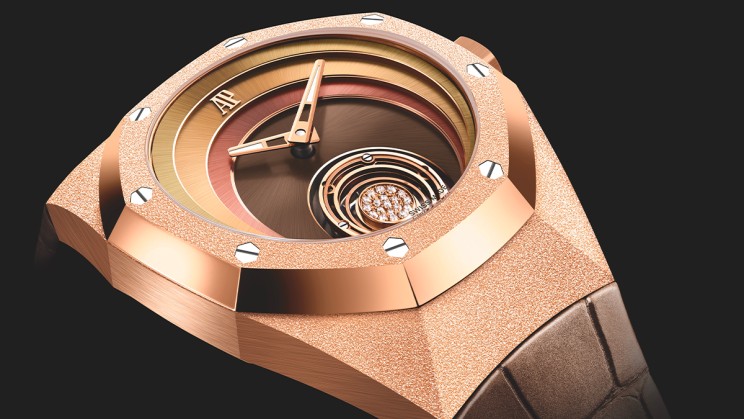
Finally, a few weeks ago, a new gold made its debut at Le Brassus: sand gold. Hovering between white and pink gold, its color changes with the light, offering a wide aesthetic palette. It is featured on a 41mm Royal Oak Selfwinding Flying Tourbillon Openworked.
To complement the case and bracelet crafted in this new gold, Audemars Piguet has developed a matching sand gold tone to adorn the skeletonized bridges and plate of Caliber 2972, whose 3D architecture takes center stage on either side of the watch. Further new sand gold launches are expected in 2024.
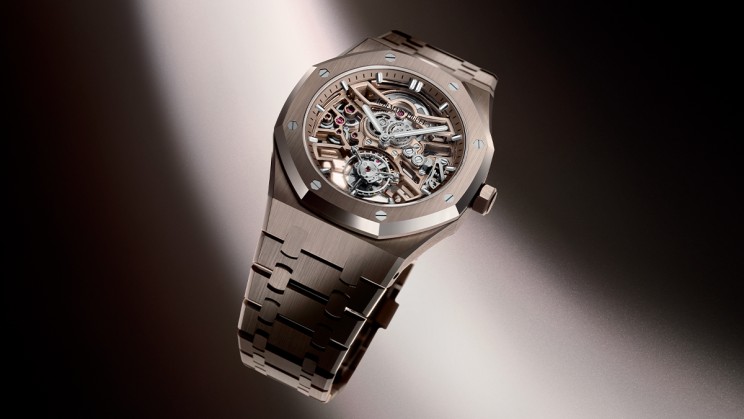
As a WorldTempus reader, we are delighted to offer you the digital version of this GMT Magazine, that you can download here.
